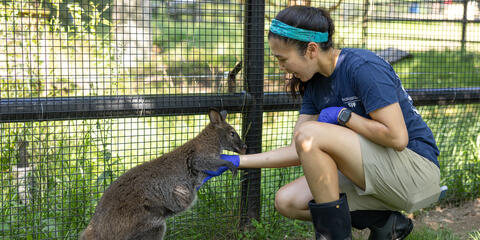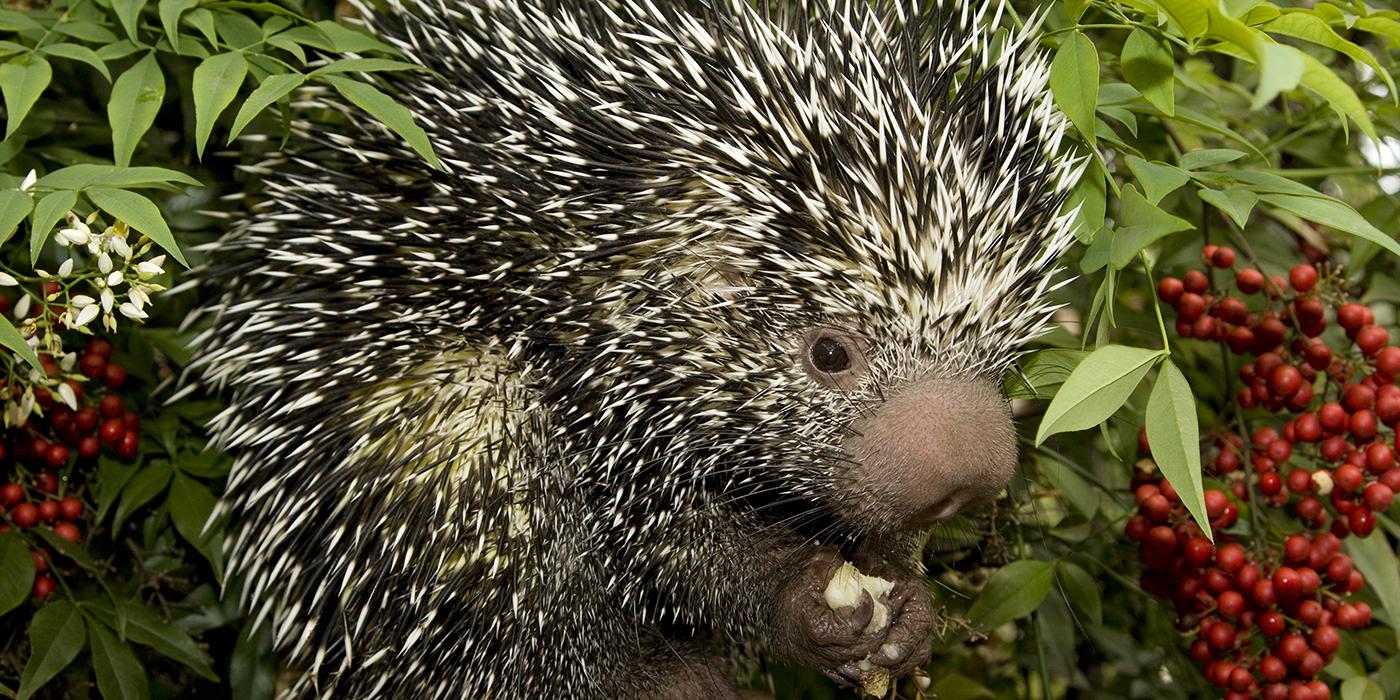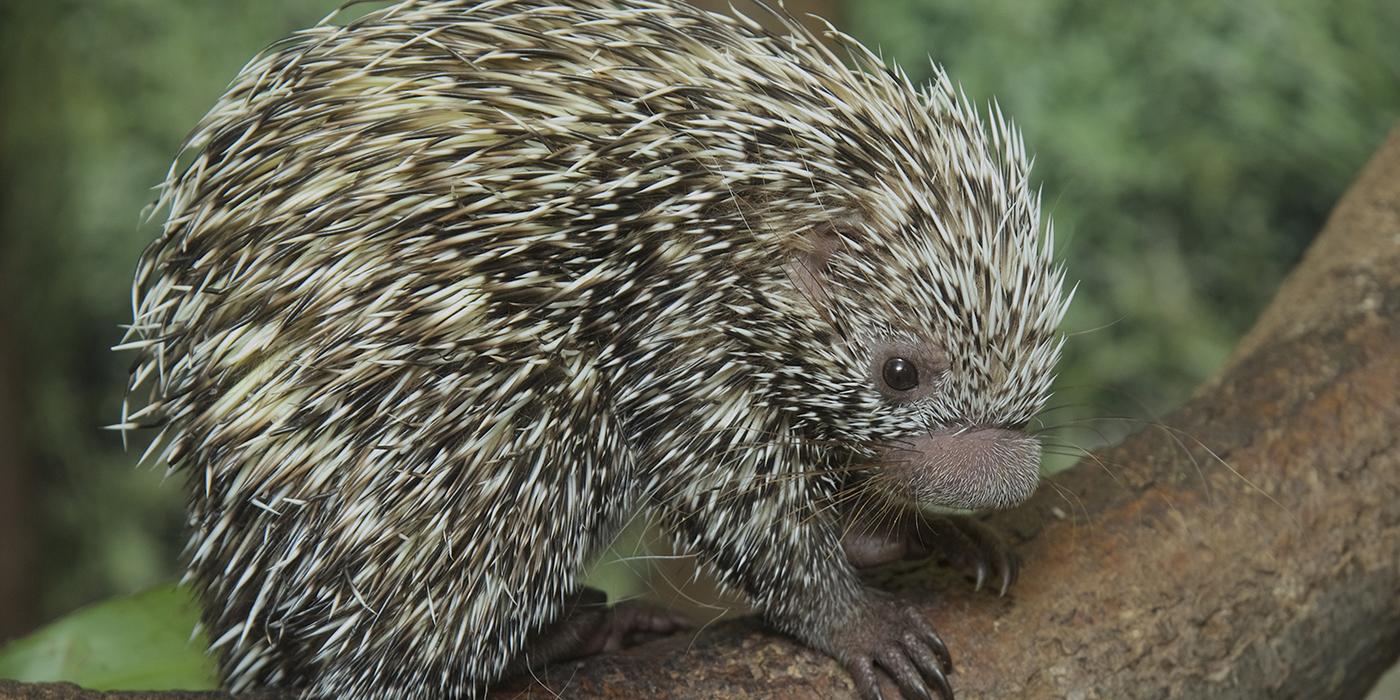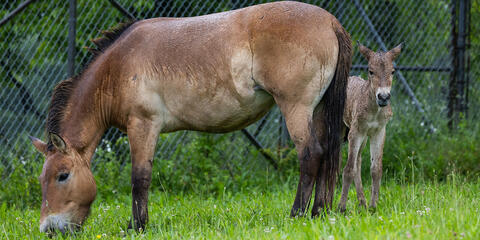Physical Description
Prehensile-tailed porcupines have short, thick quills and their body color ranges from yellowish to almost black.
Size
They weigh from 4 to 11 pounds (2 to 5 kilograms). Their bodies are 12 to 24 inches (30 to 60 centimeters) long and their tails are almost as long as their bodies, adding another 13 to 19 inches (33 to 48 centimeters).
Native Habitat
Prehensile-tailed porcupines live in the South American forests of Venezuela, Guiana, Brazil, Bolivia, Paraguay, Trinidad, and some extreme northern sections of Argentina.
Arboreal animals, they are also excellent climbers and spend the majority of their time in trees. Their ranges vary from 20 to 94 acres (8 to 38 hectares).
Lifespan
Life expectancy in human care ranges from 12 to 17 years.
Communication
This species does not hesitate to attack an adversary, which it does by biting and/or sitting on its haunches to shake its quills. They will stamp their hind feet when excited and curl up to protect their soft underbelly. They can produce a variety of sounds, from moans and whines to grunts, coughs, shrieks, barks and wails.
Food/Eating Habits
Prehensile-tailed porcupines are herbivores that eat leaves, flowers, shoots, roots and the cambium layer found beneath the bark of some trees.
At the Zoo, prehensile-tailed porcupines are fed biscuits, root vegetables, nuts and greens.
Sleep Habits
These animals are nocturnal; they typically sleep during the day in the upper canopy of trees, although they have also been found resting on lower limbs and in hollow trunks and lower burrows. They are reported to move to a new tree each night.
Reproduction and Development
Females reach sexual maturity around 19 months and can continue be reproductive to up to 12 years of age. The gestation period lasts about 203 days, resulting in the birth of a single, well-developed young that usually weighs about 14 ounces (400 grams). It is born with eyes open and is able to climb. Weaning occurs at around ten weeks of age; however, the animal does not reach full size until closer to 48 weeks.
Smithsonian's National Zoo scientists use the innovative technique of analyzing DNA extracted from a quill to determine the sex of prehensile-tailed porcupines. Porcupine sexual organs are internal—it can take up to six months before the sex is known. The DNA test identifies the baby porcupine's sex very rapidly.
At the Zoo, a prehensile-tailed porcupine female was trained to participate in ultrasounds, which enabled animal care staff to provide her with prenatal care and prepare for the porcupette’s birth. Learn more about ultrasound training:
Conservation Efforts
Prehensile-tailed porcupines are occasionally hunted, but no major threats to the species exist. They occur in multiple protected areas within their range and are considered relatively tolerant to habitat modification.
Help this Species
- Be a smart consumer. Choose products made with sustainable ingredients, such as Smithsonian certified Bird Friendly coffees, which support farmers striving to limit their impact on wildlife and habitat.
- Share the story of this animal with others. Simply raising awareness about this species can contribute to its overall protection.
Meet the Animals
Animal News
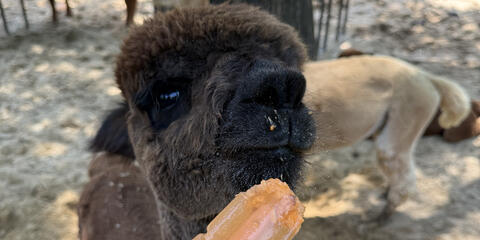
Keeping the Farm Animals Cool with Frozen Treats
